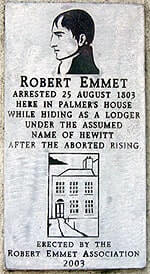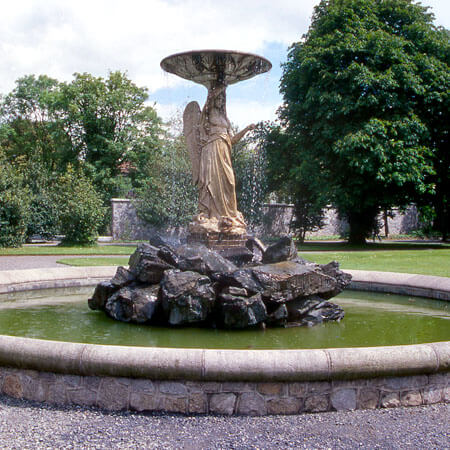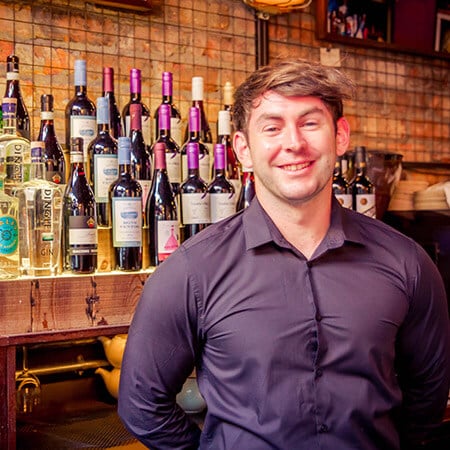A closer look at Harold’s Cross
Why do any of us choose what part of the city we live in? Budget usually dictates, as well as practicalities: Is there a Luas stop? What are the schools like? Sometimes it’s for random reasons too. Occasionally, we’ll get a yen to live somewhere in particular, because we’ve decided we like its village vibe.
When I first moved to Harold’s Cross, my motivation was less notional and more prosaic. We’re talking about a room in a very nice house with people I liked and, most importantly of all, it was only a twenty minute walk to Dublin’s city centre.
In my initial assessment of Harold’s Cross, I failed to take account of the finer points of what a genial part of Dublin it is. This came later during my five year stint in the ‘X’, as my housemates and I duly appointed it.

Street art on Harold’s Cross Road. Photo by William Murphy, CC BY-SA 2.0
Harold’s Cross Park – The jewel of the village
Say the words ‘Harold’s Cross’ and the first thing that tends to come to people’s minds is the recently closed greyhound track. Note: it is entirely possible to be a long-term resident of Harold’s Cross and never once have attended a night at the races.
The same cannot be said of Harold’s Cross Park, which should be visited at every opportunity. That’s because it is a small and perfectly formed little Victorian-style oasis of green, beloved by dog walkers and parents alike.
During the warmer months, it is awash with beautiful blooms. And, in winter, you can heat up with a cup of tea at Noshington – the park’s popular café.
When you’re looking for a more solitary excursion, the scenic Grand Canal is just at the other end of Harold’s Cross Road too.

Emmet Bridge at Harold’s Cross. Photo by William Murphy, CC BY-SA 2.0
A long and somewhat sinister history
Historically, there are some dark elements to the area’s past. Harold’s Cross was an area known for its public executions back in the 18th century.
In fact, the area may have been named after the local gallows. Though another possible explanation is that, centuries ago, a cross was placed here to mark the boundary between lands owned by Dublin’s archbishop and the lands of the Harold clan.
Harold’s Cross is also where the nationalist Robert Emmet was captured, as commemorated by plaques at both Harold’s Cross bridge, which is aptly named Emmet Bridge, and the place where he was arrested on Harold’s Cross Road. His sweetheart, Sarah Curran, lived locally.
The neighbourhood is also home to many ‘Mounts’ – Mount Jerome cemetery, where J.M. Synge and Oscar Wilde’s father are buried, and Greenmount House, which became Dublin city’s first hospice.
A thriving food and drink scene
Today’s Harold’s Cross is a more secular and, arguably, peaceful place, boasting a friendly mix of older residents and young families.
Not to suggest that Harold’s Cross is on the cusp of a hipster makeover, à la Smithfield. Nonetheless, there have been some intriguing new injections of life of late. To name just a few, there’s Provider Fine Food & Coffee, Pizza Truck, Brew 204, Green Fox café and Five Points – 3fe’s latest location.
However, it’s always had its fair share of local eateries and pubs. Peggy Kelly’s and The Harold House are great for a pint, while MVP at Emmet Bridge offers a dog-friendly option.
Konkan is one of the best Indian restaurants in Dublin and HX46, which combines both café culture and pan-Asian cuisine, reliably serves up crowd pleasers from 10am through ’til 10pm. Critics have also given the thumbs up to Craft, where fine dining is given a casual makeover.
For a real sense of the X, visit the annual Harold’s Cross Festival which usually takes place locally during the month of May. Traditionally, it features a dog show, art exhibitions and live music aplenty.
Are you just getting to know the city? Check out our introductory guide to Dublin neighbourhoods for more local insights and lore.



